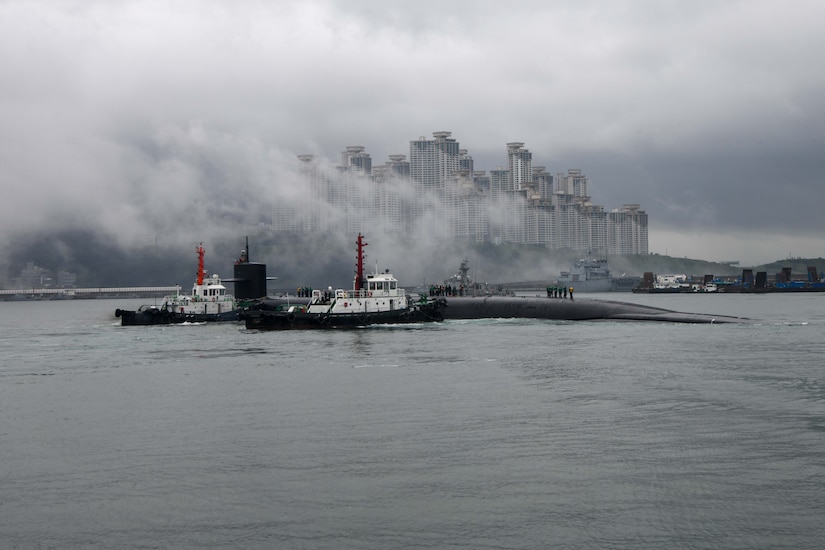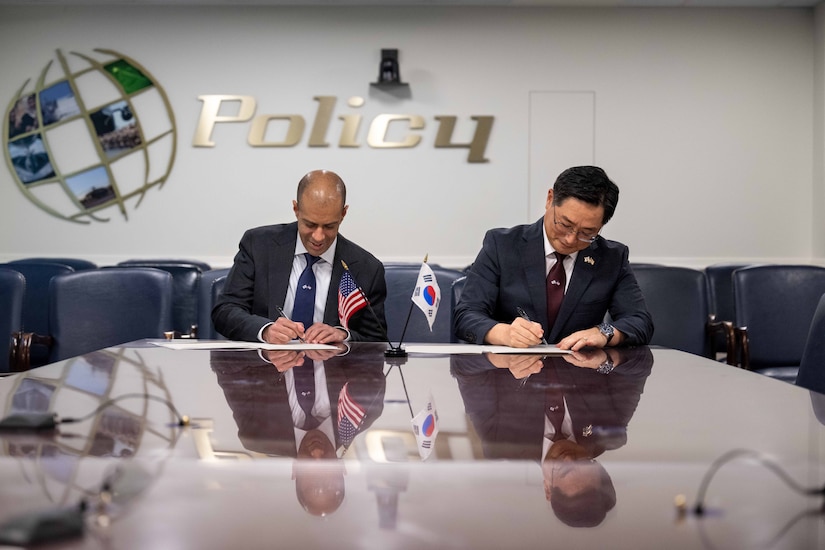The U.S. maintains an asymmetric strategic advantage through its global network of allies and partners amid increasing competition, a senior Pentagon official said yesterday.
Vipin Narang, acting secretary of defense for space policy, said the Defense Department remains focused on continuing to strengthen its alliances and partnerships throughout the globe as a key pillar to its competitive approach as nuclear risks increase.
“While the administration has long sought to strike a balance between deterrence and arms control, we now find ourselves in nothing short of a new nuclear age,” Narang said during a discussion hosted by the Center for Strategic and International Studies, a public policy think tank in Washington.
The new era, he said, is marked by “an unprecedented mix of multiple, revisionist, nuclear challengers who are uninterested in arms control or risk-reduction efforts, each rapidly modernizing and expanding their nuclear arsenals and openly threatening to employ nuclear weapons to achieve their aims.”
Those challengers include Russia, which continues to threaten nuclear escalation in its ongoing invasion of Ukraine even though Russian diplomats have proclaimed the need to avoid nuclear threats, Narang said.
Narang cited Russia’s growing stockpile of lower-yield, nuclear weapons that are unrestricted by treaties and Russia’s development of a new anti-satellite capability designed to carry a nuclear weapon into space.
The latter capability, he said, poses a threat to “an entire orbit of assets crucial not just to the United States but the entire world.”

Narang also noted the increasing nuclear challenges in the Indo-Pacific posed by China and North Korea.
A 2021 study by nongovernmental researchers revealed hundreds of new intercontinental ballistic missile silos under construction in Western China. Also in 2021, the intelligence community revealed that China had accelerated its nuclear expansion and assessed that China’s government would likely field more than 1,000 operational warheads within the next decade.
“This expansion is being fueled, literally, by Russia as Moscow supplies China with highly enriched uranium reactor fuel, which supports the production of weapons-grade plutonium,” Narang said.
He also noted Russia’s growing partnership with North Korea, which he said further illustrates the disturbing possibility of a collaboration between two nuclear-armed adversaries of the U.S.
“Any one of these nuclear challenges would be daunting by itself, but the simultaneity and growing collaboration and evidence of collusion between them is unprecedented, forcing us to think in new and careful ways about challenges, such as escalation dynamics and deterring opportunistic aggression in this new nuclear age,” Narang said.
The United States’ competitive approach to these growing challenges includes three pillars, he said, including fielding a modern nuclear deterrent and building the future generation of strategic thinkers and leaders to shape future nuclear policy and capabilities.
Additionally, the U.S. continues to strengthen its global alliances and partnerships, which enhance strategic deterrence.

In the Indo-Pacific, the U.S. has focused on tailored dialogues with key regional allies, including South Korea, Japan and Australia. Topics under discussion include conventional nuclear integration, crisis consultation and efforts to bolster the common understanding of U.S. nuclear deterrence posture and capabilities.
NATO has also made significant strides in nuclear deterrence and adapting to the Russian threat, Narang said, including modernization of the alliance’s nuclear capabilities and nuclear planning efforts to improve readiness for a range of potential contingencies.
Narang said the steps the U.S. has taken in the face of the growing challenges “may help incentivize our adversaries to engage in strategic arms control discussions.”
“However, if our adversaries continue to make choices that make them and the world less safe, the United States is prepared to do what is necessary to successfully compete to deter aggression and assure our allies in this new nuclear age,” he said.




